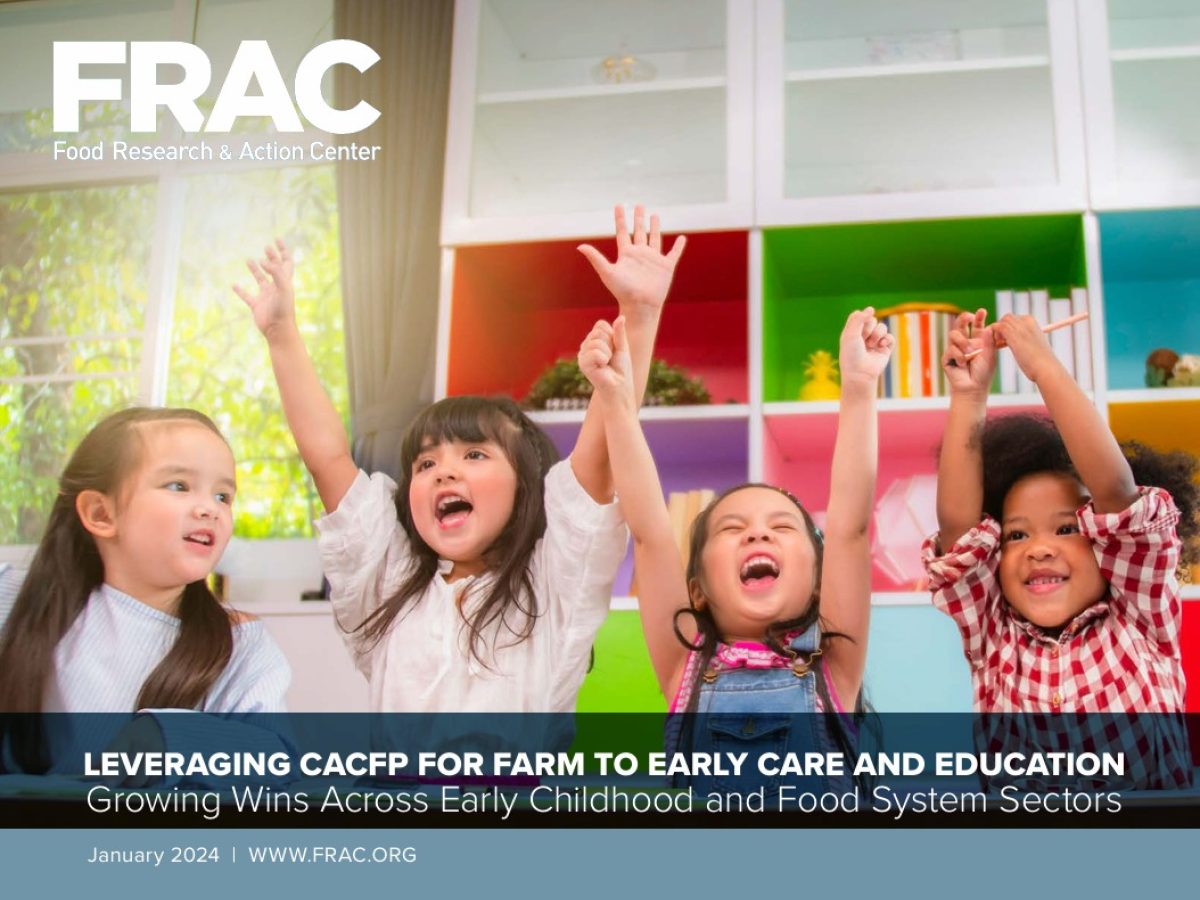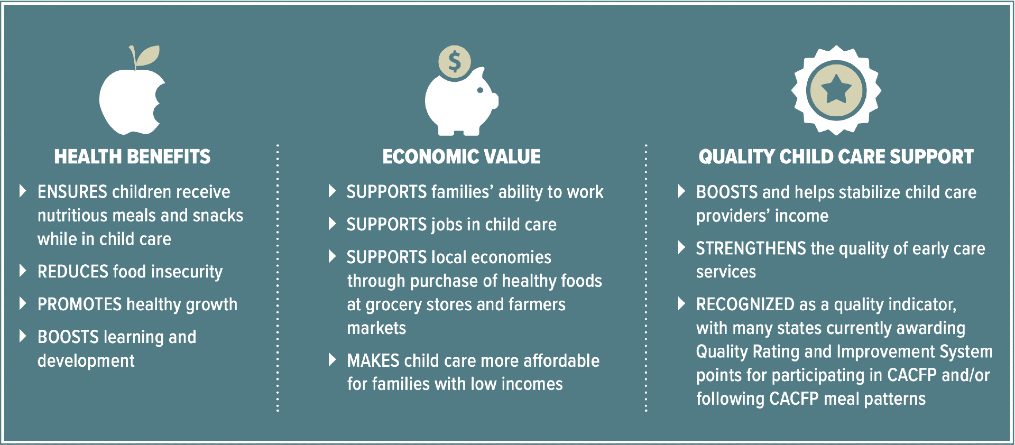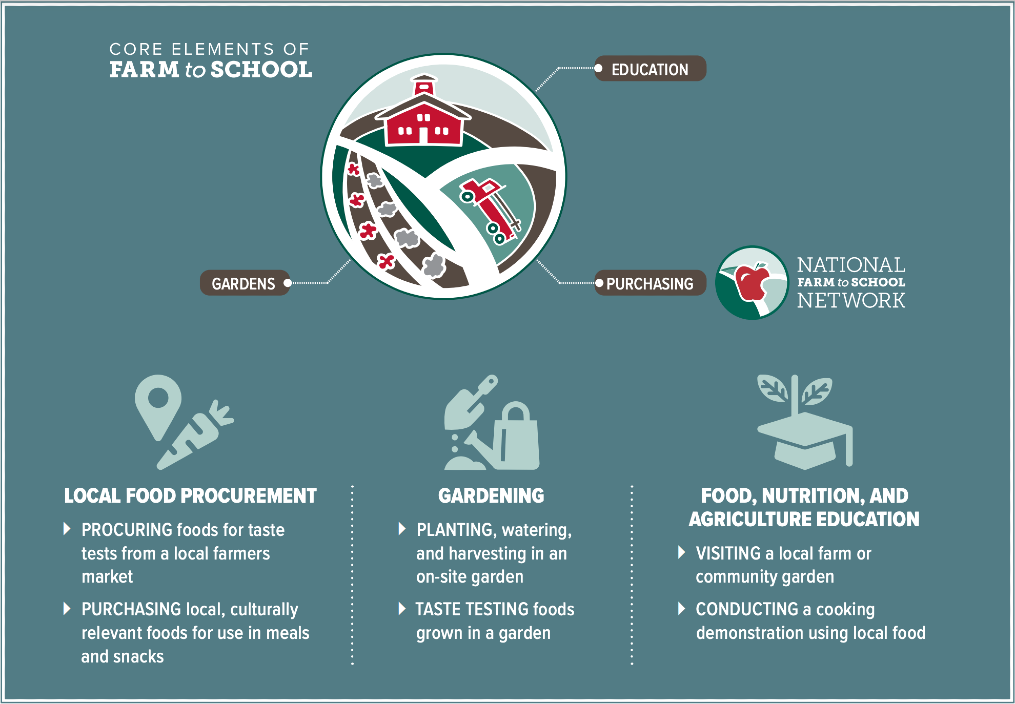Leveraging CACFP for Farm to ECE
February 5, 2024

When combined, the CACFP and Farm to Early Care Education (Farm to ECE) activities can have an extraordinary impact on children, child care providers, and local communities. FRAC’s report Leveraging CACFP for Farm to Early Care and Education: Growing Wins Across Early Childhood and Food System Sectors aims to support child care providers to access CACFP and utilize it for eligible Farm to ECE activities by highlighting the mutually beneficial synergy between these initiatives. The report also provides recommendations for stakeholders to boost participation in these vital programs.
Why it Matters
Increased access to and use of CACFP and Farm to ECE activities is a pivotal cross-sector approach to improving children’s equitable access to fresh, nutritious foods to reduce hunger.
How CACFP and Farm to ECE Combine for Maximum Impact
Research shows that it can often be prohibitively expensive for child care providers to provide local foods for use in meals served to the children in their care. The CACFP, as a mandatory federal funding mechanism, helps to defray these costs, paying for nutritious meals and snacks for eligible children who are enrolled at participating child care centers, family child care homes, afterschool programs, and emergency shelters.

CACFP boosts the potential of Farm to ECE activities, which seek to enhance nutrition by expanding access to local food sources, hands-on gardening activities, and food and agricultural education, while encouraging the buying of locally farmed food.

Likewise, Farm to ECE activities can support the impact of CACFP by increasing the actual intake of healthy foods served to children in child care settings, and uplifting local communities by supporting local and regional farmers, ranchers, dairies, food processors and distributors.
How CACFP Can be Used for Farm to ECE Activities
CACFP can support all three core elements of Farm to ECE activities by providing resources and defraying the monetary costs associated with local food procurement; garden development and maintenance; and food, nutrition, and agriculture education. CACFP state administrative expense (SAE) funds can also be used to support systems changes that strengthen and expand Farm to ECE.

Recommendations to Enhance Access to CACFP and Farm to ECE
Enhance Child Care Providers’ Access to CACFP
- Promote awareness of the CACFP with tailored communications
- Maximize accessibility of trainings for CACFP sponsors and providers
- Streamline program requirements, reduce paperwork, and maximize technology to improve program access
- Improve CACFP reimbursements for child care providers
- Allow child care homes and centers the option of serving an additional meal service
- Eliminate the area eligibility text to streamline access to healthy meals for young children in family child care homes
- Enhance program reimbursements and supports to bolster CACFP sponsoring organizations
- Support team nutrition’s CACFP nutrition education and program efforts
Support CACFP Providers’ Farm to ECE Activities
- Increase awareness of Farm to ECE and the allowable uses of CACFP to support it, including integrating Farm to ECE and local food procurement training into existing CACFP training and site visit infrastructure
- Foster peer ambassadors, learning groups, and community coaching around CACFP and Farm to ECE
- Leverage CACFP state administrative expense funds to provide training and technical assistance on Farm to ECE
- Support local and state-level local food procurement incentives for CACFP
- Develop and distribute processes, guides, and tools that streamline the use of CACFP for Farm to ECE activities
Bolster Local Food System Partners’ Access to CACFP Market Channels
- Invest in and/or develop shared central kitchens and purchasing cooperatives to support local food producers’ access to CACFP market channels
- Connect CACFP providers and farmers, gardeners, or other food system partners that may be interested in working together
- Develop and distribute resources tailored to farmers and food system partners to inform on CACFP and Farm to ECE
- Develop a local food infrastructure within traditional food retail locations and vendors
For more information, read FRAC’s report Leveraging CACFP for Farm to Early Care and Education: Growing Wins Across Early Childhood and Food System Sectors.
